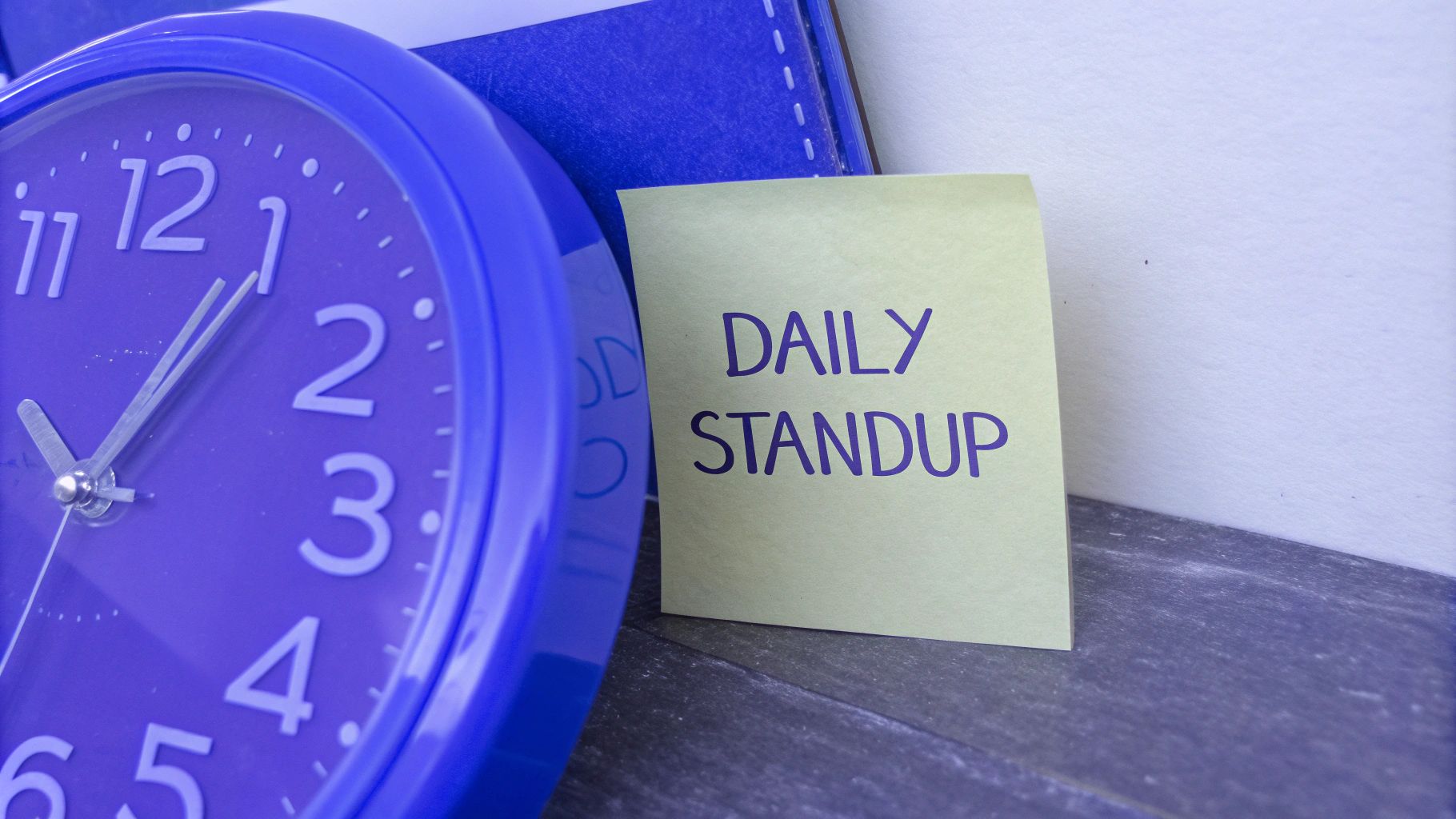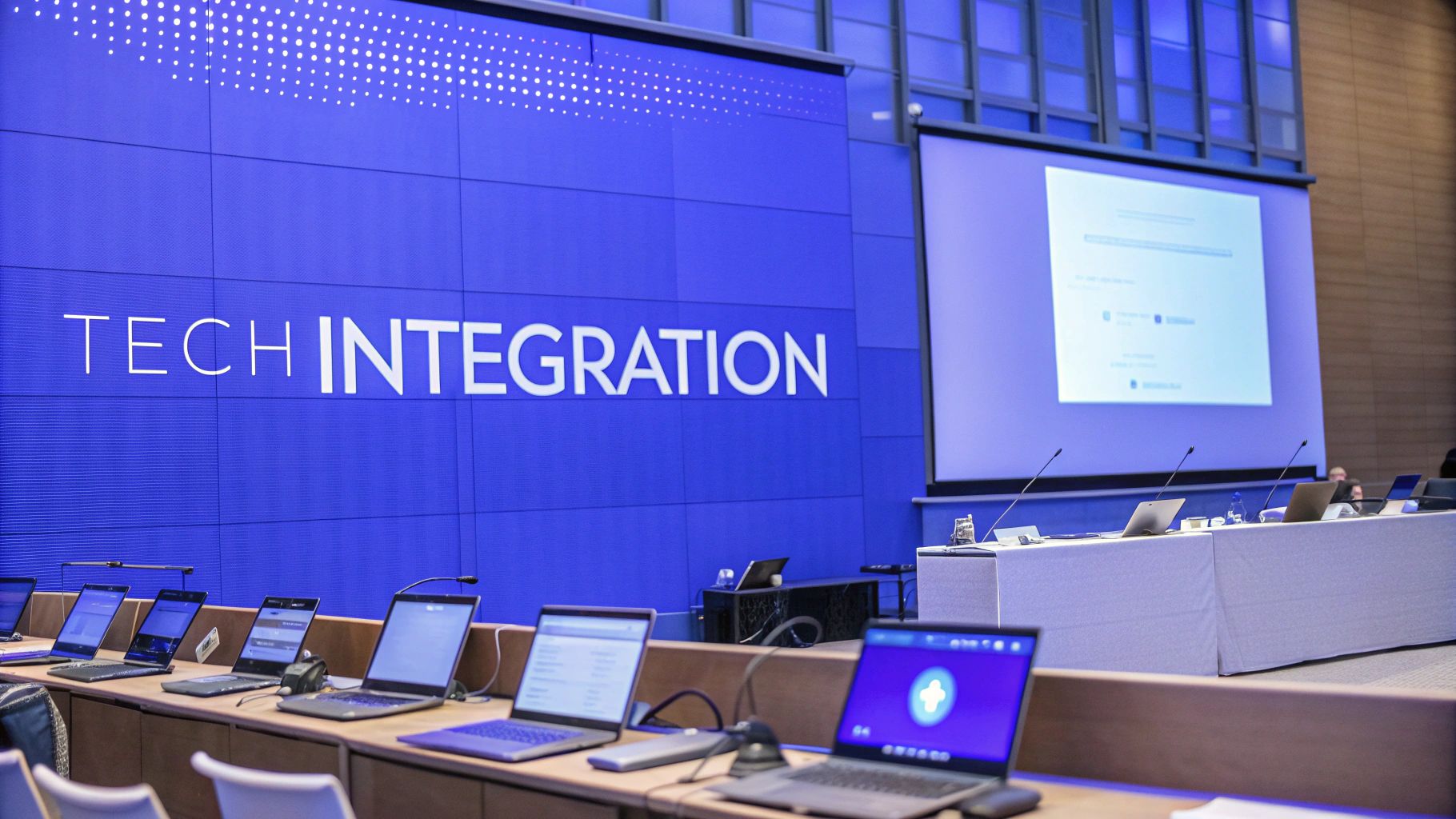Daily Standup Meetings Guide: From Chaos to Clockwork Collaboration

Why Traditional Standups Are Failing Modern Teams
Many teams find their daily standup meetings have become dull status updates that feel more like a checkbox exercise than a valuable team activity. This decline in effectiveness stems largely from how work has evolved - with teams now spread across different locations and time zones, the traditional in-person standup format struggles to serve its original purpose.
The rigid "three questions" structure (what did you do, what will you do, any blockers?) often leads to surface-level updates rather than meaningful discussion. Team members recite their tasks without engaging in real problem-solving or collaboration. For example, when working on complex software projects, developers might gloss over technical challenges to keep updates brief, missing opportunities for the team to help troubleshoot issues early.
The Pitfalls of Status-Update Standups
A common issue is that standups become one-way status reports to managers rather than collaborative team discussions. Instead of engaging with each other's work and challenges, team members passively listen while waiting their turn to speak. This defeats the core purpose of standups - to help teams align their work and quickly remove obstacles.
The "meeting after the meeting" problem also frequently occurs. When complex issues come up but can't be fully addressed in 15 minutes, teams schedule follow-up meetings - creating more interruptions in the workday. Rather than improving communication flow, traditional standups can add to meeting overload. For more guidance on running effective standups, check out: How to master scrum standup meetings.
Reimagining Daily Standup Meetings for Modern Teams
Teams today need a more flexible approach focused on project goals and open dialogue rather than individual task lists. Tools like Slack enable asynchronous updates that work better for distributed teams, letting people share progress and flag issues without disrupting deep work time.
By rethinking the traditional standup format, teams can transform these meetings from a draining obligation into a valuable collaboration opportunity. The key is shifting focus from status reporting to active problem-solving and ensuring everyone stays aligned on priorities and goals. This mindset change helps teams get more value from their daily sync-ups while boosting morale and productivity.
Engineering the Perfect 15-Minute Meeting
Daily standup meetings are essential for keeping teams aligned and informed. But without proper planning and structure, these brief sessions can quickly become unproductive. Just as building a bridge requires careful planning, designing an effective 15-minute standup requires thoughtful preparation to enable smooth information flow and team collaboration.
Strategic Question Sequencing
The classic standup questions about yesterday's work, today's plans, and blockers form a good foundation, but their order matters. By discussing completed and planned work before addressing blockers, team members can better identify and explain challenges within the project context. This approach helps surface dependencies and bottlenecks more clearly - like understanding the full blueprint before identifying structural issues.
Handling Unexpected Challenges
Even well-structured standups can get derailed by urgent issues. The strict 15-minute timeframe means teams need clear processes for handling surprises. For example, if someone reports a critical bug, rather than trying to solve it on the spot, note the issue, identify who needs to be involved in the solution, and schedule a separate discussion. This focused approach keeps the standup on track while ensuring urgent matters get proper attention later. Think of it like emergency room triage - quickly assess and direct issues to the right people.
Maintaining Energy and Focus
Keeping everyone engaged during a brief standup takes skill, especially with larger teams. Having different team members lead the standup creates shared ownership and prevents staleness. Using visual tools like shared digital boards can help anchor discussions and clarify project status. The standup leader acts as a conductor, keeping everyone in sync and moving forward together. Visual aids serve as shared reference points - much like how a good map helps a group stay oriented during a hike.
Actionable Discussions, Not Status Updates
The standup shouldn't devolve into a series of disconnected updates. Focus discussions on how individual work connects to project goals and outcomes. Instead of listing completed tasks, highlight how that work moves the team closer to key objectives. This creates meaningful dialogue about progress and reinforces how each person's efforts contribute to shared success. When the team clearly sees how their work fits together, collaboration and problem-solving happen more naturally.
Creating Psychological Safety in Daily Standups

Daily standup meetings work best when team members feel safe to speak openly about their work, including any challenges they face. When people know they won't be judged or criticized for being honest about problems, they're more likely to share valuable insights that help the whole team improve. This sense of security allows the team to focus on finding solutions rather than hiding difficulties.
Building Trust Through Open Communication
Creating psychological safety starts with clear guidelines about how team members should interact during standups. For example, teams should practice active listening and maintain respectful discussions, even when disagreeing. Team leads set the tone by being open about their own challenges and actively seeking input from others. This shows the team that it's normal and helpful to discuss problems openly. Tools like TeamCheck can provide anonymous feedback options when team members need to raise sensitive issues.
Encouraging Participation From All Personality Types
Different team members communicate in different ways, and standups should accommodate these variations. Some people need time to collect their thoughts before speaking - for them, offering written updates or pre-meeting notes can help them contribute more effectively. More outspoken team members can help by being mindful of their speaking time, making sure quieter colleagues have space to share their perspectives. When everyone has a chance to contribute in their preferred way, the team benefits from more diverse input.
Handling Difficult Conversations Constructively
Every team faces disagreements, and daily standups can help address small issues before they grow into bigger problems. The key is approaching these situations with empathy and a focus on finding solutions. For example, if team members disagree on how to handle a task, the standup can be used to acknowledge the different viewpoints and set up a separate discussion to explore the options in detail. This keeps the standup moving while ensuring important issues get proper attention. When teams view conflicts as chances to learn and improve, standups become more effective at building stronger working relationships.
Mastering Remote Standup Dynamics
Daily standup meetings help teams stay aligned, but they can be challenging in remote settings. When team members are separated by screens instead of sharing an office, it takes extra care to build connections and keep everyone engaged. Here's how distributed and hybrid teams can run effective, engaging daily standups.
Overcoming Distance and Time Zone Barriers
Managing time zones is one of the biggest challenges for remote standups. A 15-minute meeting that works smoothly for co-located teams becomes much more complex when participants span multiple continents. The key is building in flexibility. Teams can rotate meeting times to share the burden of early or late calls. When live meetings aren't practical, asynchronous updates through tools like Slack allow team members to stay connected on their own schedule. A dedicated channel for daily updates creates a searchable record that everyone can reference, regardless of their time zone.
Fostering Connection in a Virtual Space
Building team bonds requires special attention in remote settings. While quick hellos are good, setting aside a few minutes for genuine social interaction makes a real difference. Start meetings with a brief personal check-in - ask what people did over the weekend or share good news. These small moments of connection help remote team members develop authentic relationships and shared purpose. For more insights on remote teamwork, check out How to master remote work with our recommended reading.
Boosting Engagement and Participation
It's easy for remote participants to zone out and become passive observers. Combat this by actively involving everyone - call on team members directly, rotate who leads the standup, or add interactive elements like quick polls or collaborative whiteboards. Changing up the format keeps meetings fresh and gives everyone a stake in their success. Like an orchestra conductor, the facilitator should draw out each person's voice.
Bridging the Gap for Hybrid Teams
Hybrid teams must work extra hard to create an equal experience for remote and office-based staff. The goal is avoiding a two-tier system where office workers have more influence. One effective approach is having everyone join standup meetings individually by video, even if some are in the same office. This puts everyone on equal footing for visibility and participation. It prevents side conversations between co-located colleagues that can leave remote team members feeling excluded. Use screen sharing for agendas and visuals so all participants can follow along together. The key is making sure location doesn't create information gaps or barriers to full participation. When handled thoughtfully, hybrid standups can strengthen team unity and ensure everyone feels equally valued and connected.
Measuring What Actually Matters

While having regular daily standup meetings is important, just going through the motions doesn't guarantee they add real value. Teams need clear ways to assess if these meetings are actually helping them work better together. Let's look at how to measure what truly matters beyond just tracking meeting length.
Beyond the Stopwatch: Key Metrics for Standup Success
A 15-minute time limit helps keep standups focused, but time alone doesn't tell the whole story. The real test is whether these meetings help teams collaborate effectively and move work forward. Here are the key metrics that paint a clearer picture:
Blocker Resolution Rate: Track how quickly obstacles mentioned in standups get resolved. When teams clear blockers efficiently, it shows the meetings are enabling good problem-solving. Low resolution rates may signal process issues that need fixing.
Action Item Completion: Monitor whether tasks discussed in standups actually get done. This reveals if meetings drive real progress or just generate talk without results. Following up on completion helps identify where team members might need extra support.
Participation and Engagement: Look at whether everyone contributes actively in standups. Good participation shows team members feel comfortable sharing updates and raising concerns. For more insights, check out: How to master impactful standups with this summary.
Sprint Goal Progress: Assess how standups help advance sprint objectives. This connects daily discussions to bigger team goals. Steady progress confirms that standups provide valuable daily alignment.
Gathering Meaningful Feedback and Implementing Change
Numbers alone don't drive improvement - teams must actively use data to make changes. Short surveys after each sprint can provide specific feedback about meeting structure and value. Dedicated retrospectives focused on standup practices also surface helpful insights.
The key is turning feedback into action. This could mean adjusting meeting format, clarifying roles, or adding new collaboration tools. By regularly reviewing and fine-tuning standups based on real feedback, teams can ensure these meetings remain a valuable part of their workflow.
Scaling Standups Without Losing Their Soul

When teams expand beyond a certain size, daily standup meetings often become unwieldy and lose their effectiveness. While a 15-minute sync works smoothly for a small group of 10 people, it breaks down with larger teams spread across different functions and time zones. Yet growing teams can keep standups productive and meaningful by adapting thoughtfully.
Managing the Multitude: Standups for Sub-Teams
The most pressing challenge as teams scale is managing participant numbers effectively. A 15-minute standup with 30 people gives each person only 30 seconds - far too little time for real updates. Breaking into smaller sub-teams solves this by allowing focused discussions where blockers surface quickly. This approach mirrors how orchestras practice - string and wind sections rehearse separately before coming together for the full performance.
Bridging the Gaps: Cross-Functional Alignment
While sub-team standups enable focused work, they can inadvertently create silos. To maintain coordination across groups, many teams use a "scrum of scrums" format. Here, representatives from each sub-team join a brief sync to share key updates and discuss dependencies. This ensures everyone stays aligned, much like site managers coordinating between electrical, plumbing and construction crews to keep a building project on track.
Embracing Asynchronicity: Tools for Scaled Communication
For teams working across time zones, asynchronous communication often works better than trying to coordinate live meetings. Tools like Slack allow team members to post updates and flag issues when convenient. This creates a searchable record of progress while eliminating scheduling headaches. Teams can stay informed and engaged even without meeting face-to-face.
Maintaining the Human Touch: Connection at Scale
As teams grow, preserving human connection matters more than ever. Even large sub-teams benefit from brief social check-ins at standup time. Simple ice breakers like "What's one thing you're looking forward to this week?" help meetings feel personal rather than purely transactional. These small interactions foster belonging and keep standups engaging even with expanded teams.